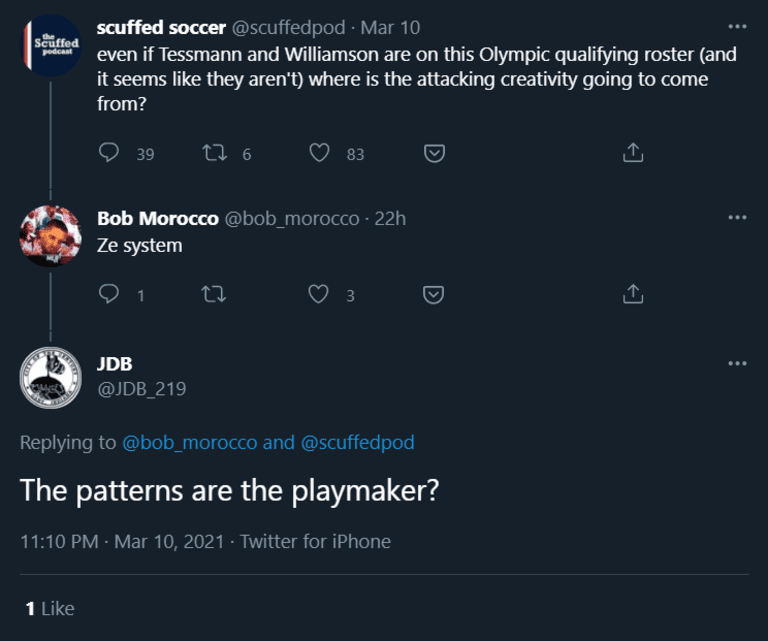US U-23 head coach Jason Kreis announced the US roster for Concacaf Olympic Qualifying on Thursday, and with it the 20 names who will battle to ensure the US avoids missing out on the men's Olympic tournament for the third consecutive cycle.
Here's the final 20-man group, barring injury:
GOALKEEPERS
- J.T. Marcinkowski (San Jose Earthquakes)
- Matthew Freese (Philadelphia Union)
- David Ochoa (Real Salt Lake)
DEFENDERS
- Sam Vines (Colorado Rapids)
- Justen Glad (Real Salt Lake)
- Mauricio Pineda (Chicago Fire)
- Henry Kessler (New England Revolution)
- Aaron Herrera (Real Salt Lake)
- Julian Araujo (LA Galaxy)
MIDFIELDERS
- Jackson Yueill (San Jose Earthquakes)
- Johnny Cardoso (Internacional)
- Hassani Dotson (Minnesota United)
- Andres Perea (Orlando City)
- Djordje Mihailovic (CF Montreal)
- Uly Llanez (Heerenveen)
- Sebastian Saucedo (UNAM Pumas)
FORWARDS
- Jonathan Lewis (Colorado Rapids)
- Benji Michel (Orlando City)
- Jesus Ferreira (FC Dallas)
- Sebastian Soto (Norwich City U-23s)
There are two big things that stand out to me. First is the center forward depth chart, in which two smallish No. 9s with middling (Ferreira) or no (Soto) first-division productivity were preferred to Jeremy Ebobisse. This isn't a surprise given it was known weeks ago that Ebobisse wasn't on the final list, but the numbers are stark:
Ebobisse isn't just more productive than any of the other forwards on the roster despite spending most of his pro career out of position on the wing. He's also done it in higher-leverage situations, including the MLS playoffs and en route to MLS is Back Tournament title with the Timbers last year.
Beyond that, he is a threat on set pieces — an A+, No. 1-on-the-list target who attracts attention even when he's not scoring — in the way no other forward in this pool happens to be. Given the outsized impact set pieces have on our game and especially in tournament play (just go back and watch the knockout rounds of the MLS is Back Tournament), I am concerned about the US's ability to be a credible, consistent threat on restarts.
Maybe Ferreira and/or Soto can allay those concerns, but if either has that kind of ability on set pieces, they've yet to show it.
The second big question is in central midfield. You'll see seven midfielders listed above, but really only the first five are central midfielders (Saucedo and Llanez are wingers). Of those five, four of them are varying shades of defensive midfielder, with just Mihailovic as any kind of attacking midfielder. Except Mihailovic spent most of last season as a playmaking winger for the Fire because he struggled with the physicality and tight spaces No. 10s have to play through in the middle of the park. He could hit the last pass if you get him away from the fray, but he couldn't conduct the game from within it.
Thus I'm straight-up shocked that neither Eryk Williamson nor Tanner Tessmann made the final cut. Each is a robust two-way presence, and both — but Williamson in particular — are capable of driving the game forward to open up the type of packed-in defenses the US are likely to face in Guadalajara. It is bizarre to put that onto either Mihailovic, who hasn't been able to do it in MLS, or on the likes of Perea and Dotson, who aren't really asked to do that in MLS. I am kind of at a loss that there's not a more proven, dynamic central midfield presence in this group.
Maybe Yueill or Cardoso will step into that role, but Yueill and Cardoso are, I imagine, penciled in to play as the tempo-setting, field-arranging registas in front of the backline. Both have done that for the full USMNT with some aplomb, and both are natural choices here. The rest of the balance in central midfield, though, seems out of whack, and I found myself nodding along to this Twitter exchange:

Perhaps, in the end, I am worrying unnecessarily and none of the above will actually matter. Even with some questionable roster choices and an overall lack of balance, and with basically the entire crop of first-choice U-23s not available (remember, the likes of Christian Pulisic, Tyler Adams, Weston McKennie, Josh Sargent, Sergino Dest et al are age-eligible for this, and simply weren't released by their clubs), the US should be at a talent advantage against everyone but Mexico.
Talent is usually enough, but not always. A lack of talent, for example, doomed the US's 2016 Olympic qualifying effort. But it wasn't a lack of talent that crushed the US in 2012 -- that team was plenty talented enough. They were just set up in a way where the margin for error became smaller and individual errors were magnified. These are the types of things that can happen in a tournament.
And that's why the US haven't made the Olympics since 2008. It's on this group to set that right.
I have a lot of questions as to why certain players were picked. Let's hope that once the whistle blows, they have the answers.












